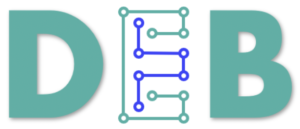How it works?
The Digital Evaluation Board (also known as the DEB) helps students understand and apply Digital Circuit design. The device itself was designed by a university electrical engineering and computer science course instructor. The system helps reduce the need for expensive lab equipment or supplies. It focuses on connecting theory to practical design through the sort of hands-on learning preferred by most technical people.
The DEB helps you develop digital electronic designs from anywhere. This could literally be from your dorm room, the library, or a picnic bench on a sunny afternoon. With the DEB in your backpack, you may not need to spend as much time in the lab anymore! It is as flexible, practical, and portable for electrical engineering and computer science classes as the calculator you are already carrying around for math.
The DEB’s thoughtful design is intentionally open and exposed because good engineers are always interested in looking over the raw circuitry in the first place. Interesting features like the 5V supply (VDD), input switches, input/output LEDs, and connectors embedded on the breadboard allow basic input/output functionality to be present for building and evaluating your daily homework assignments. Finally, the DEB also includes a circuit failure detection system. This feature allows you to get alerted if some goof-up happens so you can fix these issues as they occur. Now you can prove to yourself that your ideas work like they ought to long before the instructor can ding your grade over a simple mistake or common oversight!

The DEB helps you to learn the fundamentals of digital electronics with a portable, miniaturized electronics lab. It’s a new mobile device specifically for EE, computer engineering and CompSci students. It not only helps with homework but you can “Frankenstein design” your own custom features and functionality into other electronics all around you. Of course, you’ll need to learn how to use it, so we have included instructions for demo circuits that provide step-by-step guidance to get started. Your teachers will have homework and lab assignments using it to explore and build some great working projects. This is a really versatile way to learn and apply a complicated form of engineering.
Our last piece of advice is the most important of all: have fun!

